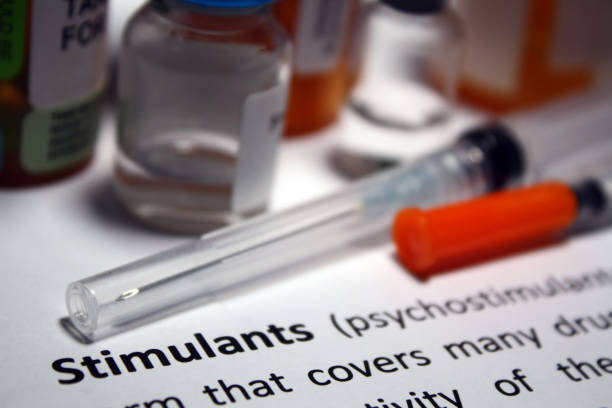Is Modafinil a Stimulant? Understanding Its Classification and Effects
What Is Modafinil? Understanding Its Core Properties
Modafinil as a Eugeroic
Modafinil is primarily known as a wakefulness-promoting drug or eugeroic. Unlike traditional stimulants, its primary purpose is to combat excessive daytime sleepiness and promote alertness without producing the intense stimulation of classical drugs like amphetamines.
It is commonly prescribed for conditions such as:
- Narcolepsy: A sleep disorder that causes sudden sleep attacks.
- Shift Work Sleep Disorder: Disrupted sleep patterns caused by working night shifts or irregular hours.
- Obstructive Sleep Apnea: Excessive daytime sleepiness caused by interrupted breathing during sleep.
Modafinil as a Central Nervous System (CNS) Stimulant
Despite being classified as a eugeroic, Modafinil does stimulate the central nervous system (CNS) to promote wakefulness. However, its effects are more subtle and less intense compared to classical CNS stimulants like Adderall or methamphetamine.
Modafinil is also a Schedule IV controlled substance in the United States, which indicates:
- Low potential for abuse compared to Schedule II substances like amphetamines.
- Recognized medical use for specific conditions.
How Does Modafinil Work? Mechanism of Action
Neurotransmitter Stimulation
Modafinil stimulates certain neurotransmitters in the brain, which play a critical role in mood, focus, and wakefulness:
- Dopamine: Boosts motivation, pleasure, and reward.
- Serotonin: Regulates mood and emotional stability.
- Norepinephrine: Enhances focus, energy, and alertness.
Differences in Mechanism Compared to Traditional Stimulants
While Modafinil shares some mechanisms of action with traditional stimulants (like increasing dopamine), its effects are notably different:
- Milder Stimulation: Modafinil does not produce the intense “high” or crash associated with amphetamines or cocaine.
- Smoother Action: Its effects on wakefulness are gradual and sustained over a longer period.
- Lower Abuse Potential: Traditional stimulants carry a much higher risk of dependence and addiction.
This makes Modafinil a preferred choice for conditions requiring sustained alertness without significant risk.
Is Modafinil Addictive? Examining Its Abuse Potential
Modafinil’s Schedule IV Classification
The Schedule IV classification reflects Modafinil’s lower risk for abuse compared to stimulants like Adderall (Schedule II). While it does have stimulant properties, its overall risk of dependence is considered minimal for most individuals.
Risk of Addiction
Although Modafinil is less addictive than classical stimulants, its chemical mechanisms still mirror those of more potent substances. Key points include:
- Low to Moderate Doses: Minimal risk of developing addictive behaviors.
- High Doses: Prolonged use or misuse at high doses may increase the risk of dependence.
- History of Substance Abuse: Individuals with past addiction issues should use Modafinil cautiously under medical supervision.
Research on Modafinil for Stimulant Addiction Treatment
Modafinil has been explored as a potential treatment for cocaine and methamphetamine addiction due to its stimulant properties and low abuse potential. Research findings include:
- Positive Outcomes: Reduction in self-reported cravings and increased clean days in some studies.
- Mixed Results: Clinical trials comparing Modafinil to a placebo often show limited overall effectiveness.
- Need for Further Research: Small sample sizes, limited study durations, and inconsistent compliance have led researchers to call for more comprehensive studies.
Modafinil vs. Classical Stimulants: Key Comparisons
Differences in Effects
When compared to traditional stimulants like Adderall, amphetamines, or cocaine, Modafinil demonstrates notable differences:
- Intensity:
- Modafinil: Gradual and sustained stimulation.
- Classical Stimulants: Intense CNS arousal with a higher likelihood of a “crash.”
- Duration:
- Modafinil: Long-lasting effects that can span 10-12 hours.
- Classical Stimulants: Effects are shorter and often accompanied by rapid tolerance.
- Abuse Potential:
- Modafinil: Lower risk of addiction, especially at therapeutic doses.
- Classical Stimulants: High potential for misuse and dependence.
Practical Uses and Benefits
Modafinil is often preferred in scenarios where alertness and focus are needed without significant side effects or addiction risks:
- Managing daytime sleepiness in medical conditions.
- Enhancing concentration for demanding work or study schedules.
- Supporting cognitive function in specific clinical treatments (e.g., ADHD).
Practical Takeaways: Is Modafinil a Stimulant or Something Different?
Key Points Summarized
- Modafinil is classified as both a CNS stimulant and a eugeroic, but its effects are milder and smoother than traditional stimulants.
- It is recognized for its low abuse potential, although misuse at high doses can still lead to dependence.
- Modafinil’s primary role is to promote wakefulness in conditions like narcolepsy, shift work disorder, and obstructive sleep apnea.
Who Should (and Shouldn’t) Use Modafinil?
- Beneficial For:
- Individuals with diagnosed sleep disorders.
- Those needing sustained focus or improved productivity under medical guidance.
- Caution For:
- Individuals with a history of substance abuse.
- Those seeking to misuse it at high, unprescribed doses.
The Bottom Line
While Modafinil shares stimulant properties, it is distinct in its classification and effects. It serves as a safer alternative to traditional stimulants due to its smoother mechanism of action, lower abuse potential, and therapeutic benefits. For individuals managing conditions like narcolepsy or shift work disorder, Modafinil provides an effective solution without the significant risks associated with stronger stimulants.
Frequently Asked Questions (FAQs)
1. Is Modafinil the same as Adderall?
No, Modafinil and Adderall are different. Modafinil promotes wakefulness with milder effects, while Adderall is a more potent stimulant with higher addiction potential.
2. Can Modafinil be addictive?
At therapeutic doses, Modafinil has a low risk for addiction. However, misuse at high doses can increase the risk of dependence.
3. How does Modafinil compare to caffeine for wakefulness?
Modafinil provides longer-lasting and more consistent wakefulness than caffeine, often leading to short-term energy spikes and crashes.
4. Is Modafinil legal without a prescription?
No, Modafinil is a controlled substance in most countries and requires a prescription for legal use.








